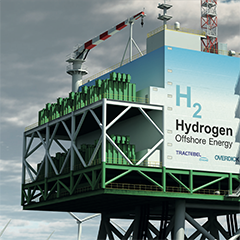Since the 2015 Paris Agreement, there has been a global consensus that the transition to a CO2-neutral energy supply needs to be achieved worldwide within the next few decades. At the same time, considerable technological progress has been made with both onshore and offshore wind energy, for example, and, as a result, the energy generated in this way is now able to compete with conventional forms of energy largely without subsidies. Nevertheless, the market for wind turbines is stagnating worldwide.
This suggests that low generation costs alone are not the key to the rapid transition of the energy system and that other factors also have a role to play. Based on current developments in Germany, the article below aims to show that the speed of transition is limited, but alternative paths for the use of renewables in sectors that have undergone only little decarbonization to date can lead to a new dynamic through the use of green hydrogen, i.e. hydrogen produced from renewable energies, as a parallel form of energy transportation. This could create new market impulses for the wind industry, nevertheless the associated technical challenges also need to be tackled.



























